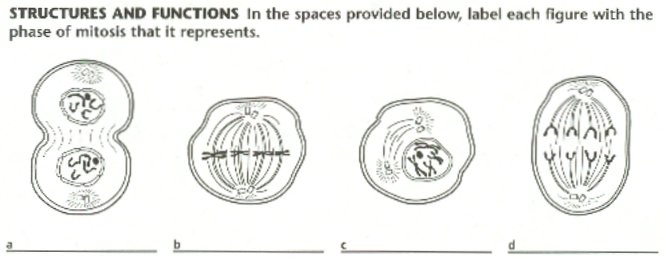
- •2012 Т.В. Шумило English for biologists
- •Предисловие
- •Unit 1. The science of biology.
- •Post-reading tasks:
- •Unit 2. Cells as biological units.
- •Post-reading tasks:
- •Unit 3. Cell structure.
- •Post-reading tasks:
- •Unit 4. Cell division.
- •Post-reading tasks:
- •Fig. 2 Diagram of mitosis of a living cell Unit 5. Tissues and organ systems.
- •Post-reading tasks:
- •Unit 6. Botany.
- •Post-reading tasks:
- •Unit 7. Plant Kingdom.
- •Post-reading tasks:
- •Unit 8. Plant structure.
- •Post-reading tasks:
- •Unit 9. Photosynthesis.
- •Post-reading tasks:
- •Unit 10. Zoology.
- •Post-reading tasks:
- •Unit 11. Protozoa.
- •Post-reading tasks:
- •Unit 12. Insects.
- •Post-reading tasks:
- •Unit 13. Amphibians.
- •Post-reading tasks:
- •Unit 14. Reptiles.
- •Post-reading tasks:
- •Unit 15. Mammals.
- •Nourish ['nʌrɪʃ]
- •Post-reading tasks:
- •Unit 16. Anatomy.
- •Post-reading tasks:
- •Unit 17. Skeleton and muscles.
- •Post-reading tasks:
- •Unit 18. The circulatory system. Respiration.
- •Post-reading tasks:
- •Unit 19. The nervous system. The brain.
- •Post-reading tasks:
- •Unit 20. The digestive system. Foods.
- •Post-reading tasks:
Unit 4. Cell division.
WARM-UP: Label each figure with the stage of mitosis it presents

VOCABULARY: Learn the following words and word combinations.
reproduction inherent property maternal
cell daughter cells vitally important
process visible to disappear
tissue to separate regeneration
to regenerate liver to
replace blood nerve cells
Guess the meaning of the following words.
System, regular, hormone, proportion, chromosome, result, nature, coordination, limit, embryo, embryonic, embryonal, phase, metaphase, prophase, telophase, anaphase, interphase, karyokinesis, interkinesis, mitosis, centriole, intensive, to migrate, to differentiate, to ionize.
Practice the following for pronunciation.
intussusception – [intəsə’sepʃn]
equatorial – [ekwə’toriəl]
interwind – [intə’waind]
accretion – [ə’kri: ʃən]
mitosis – [mi’tousis]
malignant – [mə’lignənt]
metaphase – [‘metəfeiz]
ionize – [‘aiənaiz]
prophase – [‘proufeiz]
tumour – [‘tju:mə]
READING: Read the text and do the tasks that follow.
The function of reproduction or multiplication is an inherent property of the living cell by which two cells are obtained which are usually so identical that it is impossible to define which of them is the maternal cell and which is the daughter one.
The vitally important process of cell division occurs either through karyokinesis or through mitosis. Division of a cell begins after a more or less protracted period known as interkinesis or interphase. In the interkinetic nucleus chromosomes are not visible but appear instead as long, thin interwind threads. At this stage the cell is ready being prepared for mitosis.
During the preparation for mitosis the cell center divides and begins moving apart to the opposite side of the cell. The chromosome threads coil up into spirals, thicken and become visible under an ordinary microscope. The nucleolus and nuclear membrane gradually disappear and a spindle is formed. This first stage of mitosis is known as prophase.
In the second stage called the metaphase the chromosomes arrange themselves in the equatorial plane of the cell in the form of a star.
The third stage of mitosis, known as anaphase, begins when the chromosomes, already split, separates. At this stage the space between the chromosomes becomes greater and greater. The threads of the spindle extending between the centrioles become shorter, and the two halves of each chromosome gradually migrate to the poles of the cell.
The final stage of division is called telophase. During it the chromosomes uncoil, the nucleolus reappears and nuclear membranes surround each group of daughter chromosomes. Thus an exact division of the material of each chromosome is made between the daughter nuclei. In the cytoplasm of each daughter cell a new division of the centrioles takes place and a membrane forms between the two cells obtained as a result of the division. Such daughter cell is smaller than the maternal one, but gradually grows and obtains the dimensions and shape typical of the cells concerned.
The duration of each phase of the mitosis and its frequency are dissimilar for different cells and vary greatly. The younger the tissue, however, the more frequently the cells divide.
Mitotic activity depends on the nature of the tissue and on its physiological condition. This is particularly intensive during growth and regeneration, hormones and other system regulators of the organism having a great effect. In many tissues mitosis is not observed as in the liver. That, however, doesn’t mean that liver cells can’t divide. If, for instance, a piece is cut from the liver of a rat, mitosis will occur immediately along the line of the cut, and the liver will completely and quickly regenerate.
During division cells are very sensitive to various environmental influences, temperature being the most important of these agents. The optimal temperature for human cell division is 37° C; deviation from that, either above or below, inhibit mitosis. The dividing cell is likewise sensitive to poisons and to radiant energy, which is the basis for treatment of malignant tumours by ionizing radiation.
It should also be noted that certain highly differentiated cells have lost the capacity to divide, as for instance, blood cells. After they have existed for a certain time they disintegrate, and special blood-forming organs produce new cells to replace them. Nerve cells are formed only during embryonal development. After birth they grow, but do not divide.
